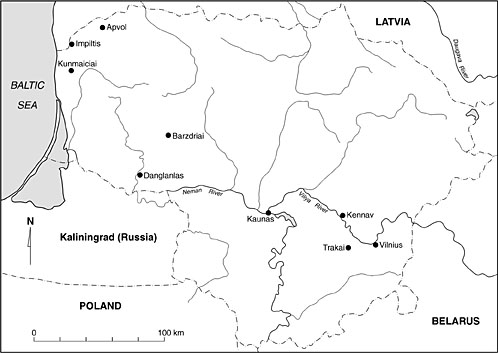

 | Page 825 |  |
Dionizy Paskiewicz (1765–1830), and it contained primarily accidental finds.

Lithuanian Archaeological Sites
Francziszek Wilczynski (1796–1859) undertook the first large excavations of hill-forts and burial mounds in eastern Lithuania, and the first book on Lithuanian archaeology was published in 1842 (Tyszkiewicz 1842). The antiquities in this book were divided according to the types of objects and artifacts found. The author, Count Eustachy Tyszkiewicz (1814–1873), was the first scholar in Lithuania to understand the significance of archaeology as an organized social science. On his initiative, the Archaeological Commission and the Museum of Antiquities were established in 1855 in Vilnius. The commission started to systematize and generalize archaeological finds and to publish archaeological works, such as the catalog of the museum. Each month, the members of the commission met to listen to and discuss lectures on history and archaeology, and several of them began excavations.
Russian authorities discovered that the Archaeological Commission was attempting to elucidate and describe the culture of ancient Rzuczpospolita, a Baltic late Neolithic, shoreline living, maritime economic (seals and fish) culture who also domesticated livestock. Because they considered that attempt to be politically dangerous, they closed the commission down after an insurrection in 1863. The Museum of Antiquities was reorganized, and any developments in Lithuanian archaeology ceased for twenty years. During that period, only private individuals continued to excavate.
When the Lithuanian national liberation movement began in the nineteenth century, it alerted the interests of Russian scientists to this part of their empire. From 1888 to 1889, Eduar Wolter (1856–1941) and a local landowner, Wandalin Szukiewicz (1852–1919), excavated medieval grave fields in southern Lithuania, and Szukiewicz, on his own, excavated some Iron Age burial mounds. At the same time, in central Lithuania, Tadeusz Dowgird (1852–1919) excavated Iron Age grave fields and burial mounds and kept precise documentation
 |  |